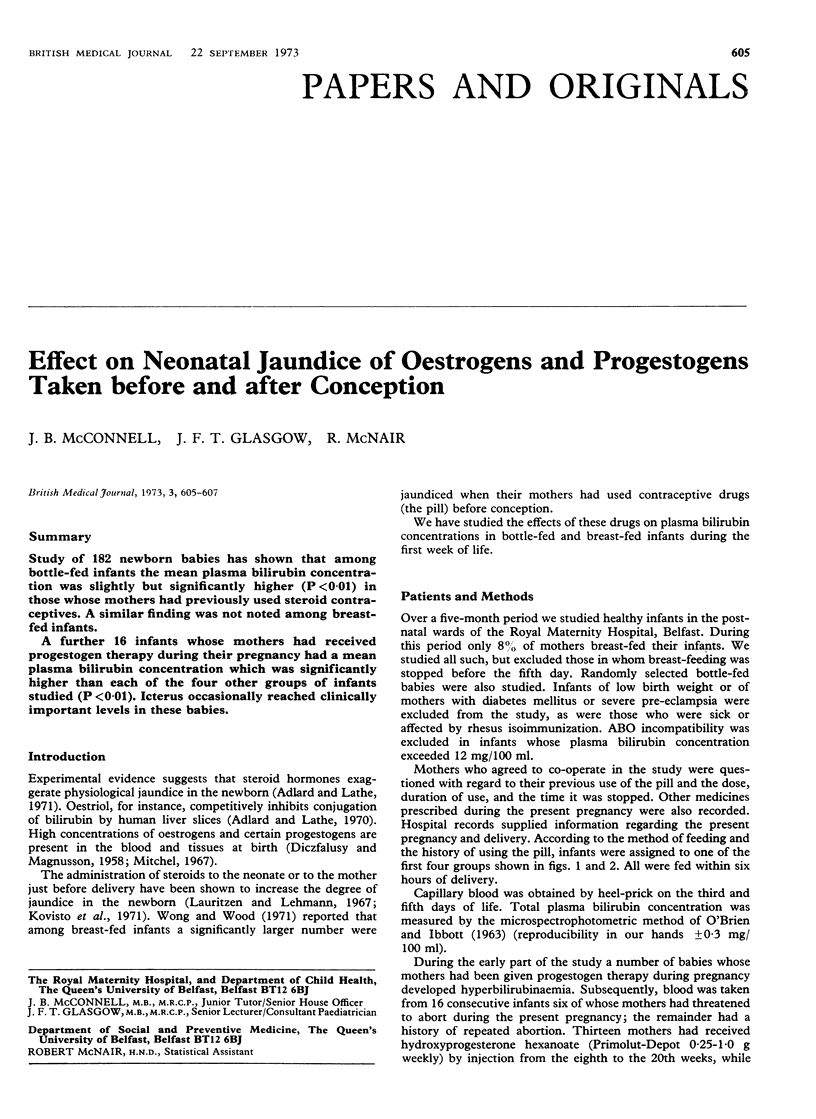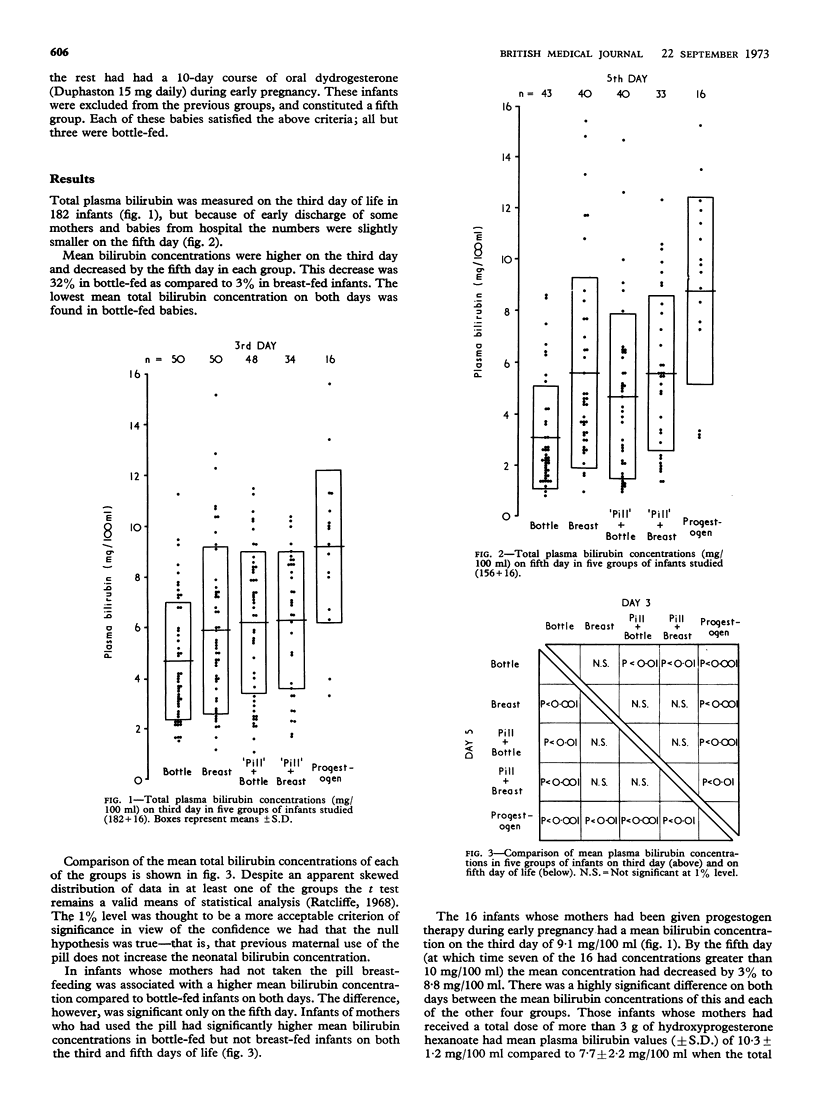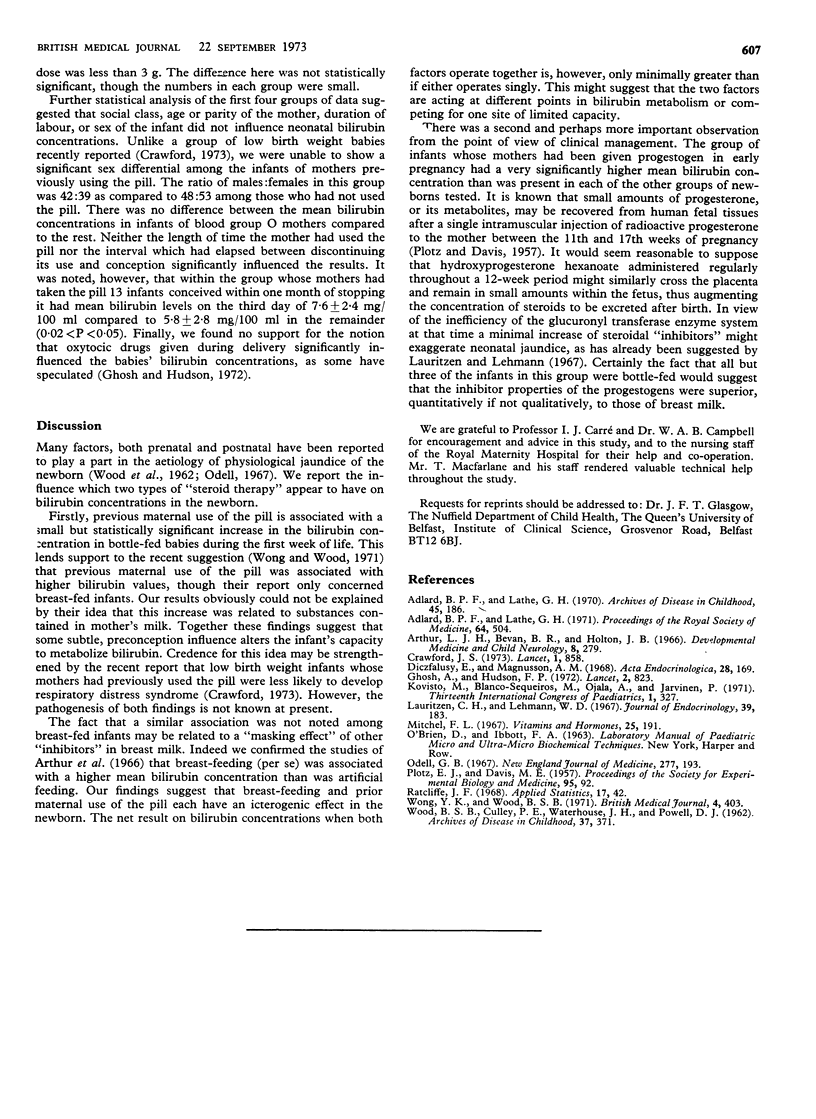Abstract
Study of 182 newborn babies has shown that among bottle-fed infants the mean plasma bilirubin concentration was slightly but significantly higher (P <0·01) in those whose mothers had previously used steroid contraceptives. A similar finding was not noted among breast-fed infants.
A further 16 infants whose mothers had received progestogen therapy during their pregnancy had a mean plasma bilirubin concentration which was significantly higher than each of the four other groups of infants studied (P <0·01). Icterus occasionally reached clinically important levels in these babies.
Full text
PDF


Selected References
These references are in PubMed. This may not be the complete list of references from this article.
- Adlard B. P., Lathe G. H. Breast milk jaundice: effect of 3-alpha 20-beta-pregnanediol on bilirubin conjugation by human liver. Arch Dis Child. 1970 Apr;45(240):186–189. doi: 10.1136/adc.45.240.186. [DOI] [PMC free article] [PubMed] [Google Scholar]
- Adlard B. P., Lathe G. H. Do steroids contribute to newborn jaundice? Proc R Soc Med. 1971 May;64(5):504–505. [PMC free article] [PubMed] [Google Scholar]
- Arthur L. J., Bevan B. R., Holton J. B. Neonatal hyperbilirubinaemia and breast feeding. Dev Med Child Neurol. 1966 Jun;8(3):279–284. doi: 10.1111/j.1469-8749.1966.tb01748.x. [DOI] [PubMed] [Google Scholar]
- Crawford J. S. Pre-pregnancy oral contraceptives and respiratory-distress syndrome. Lancet. 1973 Apr 21;1(7808):858–860. doi: 10.1016/s0140-6736(73)91422-0. [DOI] [PubMed] [Google Scholar]
- DICZFALUSY E., MAGNUSSON A. M. Tissue concentration of oestrone, oestradiol-17 beta and oestriol in human foetus. Acta Endocrinol (Copenh) 1958 Jun;28(2):169–185. doi: 10.1530/acta.0.0280169. [DOI] [PubMed] [Google Scholar]
- Ghosh A., Hudson F. P. Oxytocic agents and neonatal hyperbilirubinaemia. Lancet. 1972 Oct 14;2(7781):823–823. doi: 10.1016/s0140-6736(72)92182-4. [DOI] [PubMed] [Google Scholar]
- Lauritzen C., Lehmann W. D. The significance of steroid hormones for the development of hyperbilirubinaemia and icterus in the newborn infant. J Endocrinol. 1967 Oct;39(2):183–188. doi: 10.1677/joe.0.0390183. [DOI] [PubMed] [Google Scholar]
- Mitchell F. L. Steroid metabolism in the fetoplacental unit and in early childhood. Vitam Horm. 1967;25:191–269. doi: 10.1016/s0083-6729(08)60037-0. [DOI] [PubMed] [Google Scholar]
- Odell G. B. "Physiologic" hyperbilirubinemia in the neonatal period. N Engl J Med. 1967 Jul 27;277(4):193–195. doi: 10.1056/NEJM196707272770406. [DOI] [PubMed] [Google Scholar]
- WOOD B. S., CULLEY P. E., WATERHOUSE J. A., POWELL D. J. Factors influencing neonatal jaundice. Arch Dis Child. 1962 Aug;37:371–377. doi: 10.1136/adc.37.194.371. [DOI] [PMC free article] [PubMed] [Google Scholar]
- Wong Y. K., Wood B. S. Breast-milk jaundice and oral contraceptives. Br Med J. 1971 Nov 13;4(5784):403–404. doi: 10.1136/bmj.4.5784.403. [DOI] [PMC free article] [PubMed] [Google Scholar]


